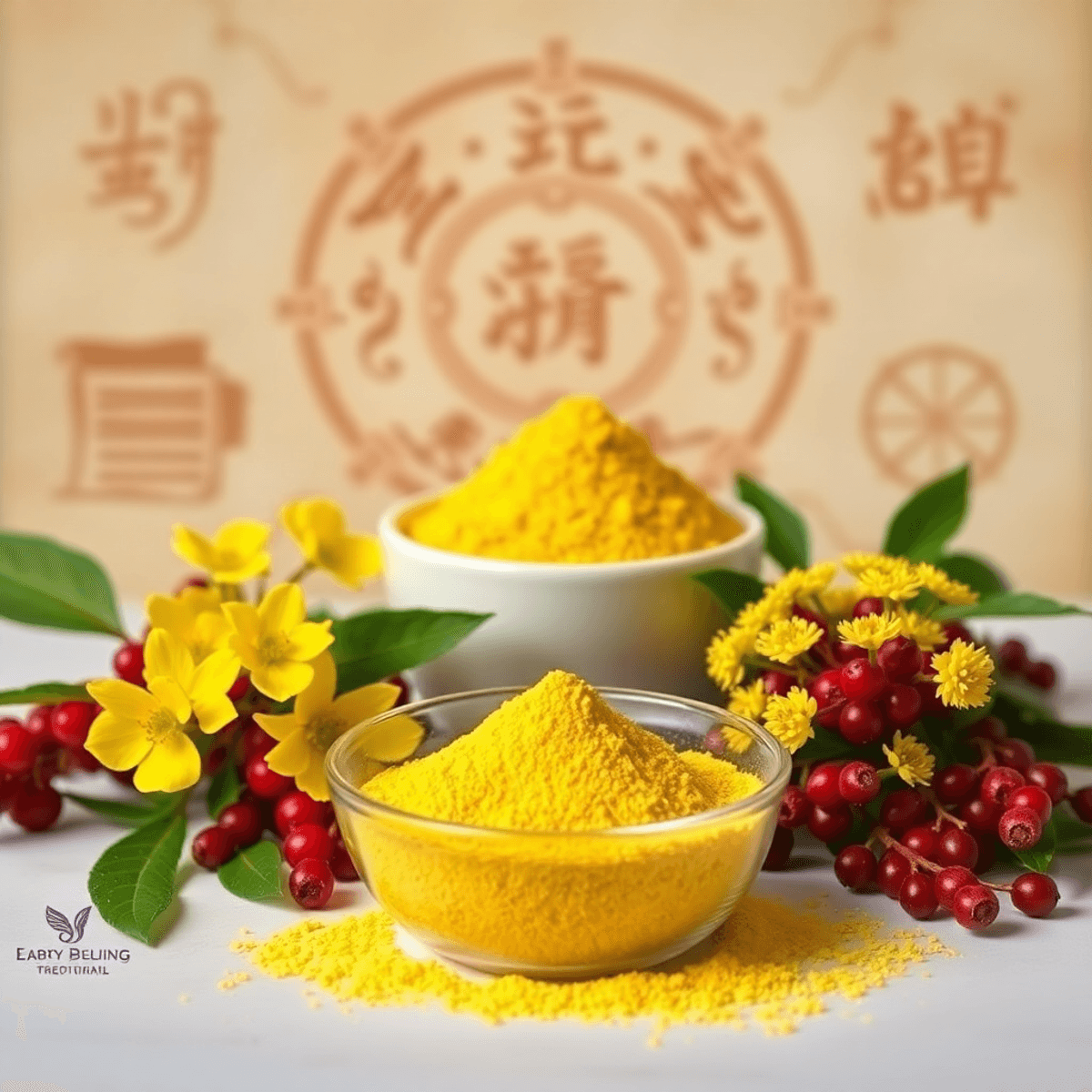Discover the Pain-Relieving Benefits of Salix Alba

Introduction
Salix Alba, commonly known as white willow, has been revered for its pain-relieving properties throughout history. Ancient civilizations, from the Greeks to Native Americans, have utilized this natural remedy to alleviate discomfort and reduce fever. The bark of Salix Alba contains salicin, an effective ingredient for pain relief that is chemically akin to aspirin.
In recent years, there has been a growing interest in natural alternatives to synthetic medications. Many individuals are seeking ways to manage pain using remedies that are gentler on the body while still effective. This trend highlights the importance of revisiting traditional solutions like Salix Alba.
This article delves into the benefits of Salix Alba as a natural pain reliever. By exploring its historical uses, chemical composition, and scientific backing, you will gain insight into how this ancient remedy can be a valuable part of your pain management strategy.
For those looking for immediate relief while exploring these natural alternatives, consider trying this original pain relief cream which leverages natural ingredients to provide effective back, joint and muscle pain relief.
Understanding Salix Alba
Salix alba, commonly known as white willow, is a well-known medicinal plant with a long history of being used for pain relief. This species belongs to the Salicaceae family and is characterized by its slender, graceful branches and narrow, lance-shaped leaves. The bark holds significant medicinal value due to its salicin content, a precursor to salicylic acid.
Description and Habitat
White willow trees thrive in moist habitats such as riverbanks and wetlands. They are native to Europe and parts of Asia but have also been cultivated in North America. These trees can reach heights of up to 30 meters (about 100 feet) and are recognized for their silver-green leaves that shimmer in the breeze.
Varieties and Medicinal Properties
Among the various types of Salix alba, Salix alba chermesina is notable for its vibrant red twigs, adding ornamental appeal during the winter months. While all Salix alba varieties share the core attribute of containing salicin, subtle differences in chemical composition may exist. Such variations can influence their potential medicinal properties, making them suitable for diverse applications in traditional herbal medicine.
Understanding these distinctions enhances the appreciation for white willow's role as a natural remedy and underscores the importance of selecting the appropriate variety for specific therapeutic needs.
Historical Context and Traditional Uses
The historical use of willow bark reveals its significance in various cultures across the globe.
Ancient Uses of Willow Bark
- The Greeks, guided by the wisdom of Hippocrates, employed willow bark for its analgesic properties. Hippocrates himself recommended the use of willow leaves to alleviate pain and reduce fever.
- Similarly, Native Americans harnessed the natural benefits of Salix alba, utilizing it to treat headaches and inflammatory conditions.
Historical Texts Mentioning Willow Bark
Ancient texts provide further testament to its long-standing role as a medicinal plant.
- The Ebers Papyrus, an Egyptian medical document dating back to 1550 B.C., mentions the use of willow for treating pain and inflammation.
- Likewise, Galen's writings recognize Salix alba, underscoring its therapeutic potential.
Evolution of Understanding Salix Alba
The understanding and application of Salix alba have evolved significantly over centuries.
- Initially revered for its ability to relieve common ailments, it has now garnered scientific interest for its biochemical mechanisms.
- While early uses were based on empirical observations, contemporary research underscores its effectiveness through a deeper grasp of its active compounds like salicin.
Willow bark's journey from ancient remedies to modern research epitomizes the blend of traditional knowledge with scientific exploration, highlighting its enduring relevance in pain management strategies today.
Chemical Composition and Mechanism of Action
Salix alba, known for its rich medicinal properties, owes much of its pain-relieving capability to a key chemical compound: salicin. Once ingested, salicin undergoes a transformation within the body, converting into salicylic acid, a substance chemically similar to aspirin. This conversion is crucial because salicylic acid plays a significant role in reducing pain and inflammation.
The effectiveness of Salix alba as an ingredient for pain relief is further enhanced by its mechanism of action. The compound works by inhibiting the activity of cyclooxygenase enzymes—specifically COX-1 and COX-2. These enzymes are critical in the inflammatory process, as they facilitate the production of prostaglandins, substances that contribute to inflammation, pain, and fever.
This biochemical pathway functions similarly to traditional non-steroidal anti-inflammatory drugs (NSAIDs), which also target cyclooxygenase enzymes to relieve pain. However, Salix alba may offer a natural alternative with potentially fewer gastrointestinal side effects compared to synthetic NSAIDs.
Understanding these chemical processes not only highlights Salix alba’s effectiveness in pain management but also emphasizes its significance as a natural remedy. This ancient plant continues to serve as an effective ingredient for those seeking alternative approaches to conventional pain relief methods.
Pain Relief Benefits Supported by Research Studies
Research into the effectiveness of willow bark extract for pain relief has yielded promising results. Several scientific studies have explored the efficacy of Salix alba in alleviating various types of pain, such as headaches and low back pain.
1. Headaches and Low Back Pain
Clinical trials have demonstrated that willow bark extract can significantly reduce headache severity and frequency. One study highlighted its effectiveness in treating low back pain, showing comparable results to nonsteroidal anti-inflammatory drugs (NSAIDs) like ibuprofen, with a dose of 240 mg of salicin providing notable relief.
2. Osteoarthritis Symptoms
The impact of Salix alba on osteoarthritis symptoms has been particularly noteworthy. Research findings indicate a reduction in joint stiffness and discomfort in patients with hip and knee osteoarthritis after several weeks of treatment with willow bark extract. Participants reported improved mobility and a decrease in overall pain levels, suggesting Salix alba as a viable alternative for managing osteoarthritis symptoms.
These studies underscore the potential of Salix alba as a natural alternative for pain relief, highlighting its analgesic properties without some of the adverse effects associated with synthetic medications.
Using Salix Alba Safely for Pain Management
Incorporating Salix Alba into your pain management routine can be achieved safely with the right approach. Understanding the dosage guidelines for Salix Alba supplementation is crucial to maximize its benefits while minimizing potential risks.
When determining the appropriate dosage, consider these factors:
- Age: Younger individuals may require lower dosages, whereas adults might benefit from a standard dose.
- Weight: Heavier individuals might need a slightly increased dosage to achieve the same effect.
- Severity of Symptoms: Those experiencing more intense pain could consider higher doses within safe limits.
It's often recommended to start with a low dosage and gradually increase, monitoring your body's response. Typically, a starting dose of 120 mg to 240 mg of salicin per day is suggested for adults. Always consult with a healthcare provider to tailor the dosage to specific needs and ensure it aligns with personal health conditions and any other medications being used.
Potential Side Effects and Precautions with Salix Alba Use
While Salix Alba is renowned as an effective ingredient for pain relief, it's crucial to be aware of potential side effects associated with willow bark consumption. Some individuals may experience:
- Gastrointestinal upset, such as nausea or stomach discomfort.
- Allergic responses in those sensitive to salicylates.
For those with pre-existing medical conditions or on medications like blood thinners, using Salix Alba might require extra caution. Always consult a healthcare professional before starting any new herbal remedy.
Conclusion: Embracing Nature's Wisdom in Pain Relief Strategies
Exploring natural alternatives for pain relief opens the door to integrating Salix Alba into your pain management plans. With its proven effectiveness, Salix Alba stands as an effective ingredient for pain relief, providing a more holistic approach when combined with conventional treatments.
- Holistic Approach: Incorporate Salix Alba alongside traditional medications to enhance overall well-being.
- Personalised Pain Management: Tailor your use of Salix Alba to complement your specific needs and lifestyle.
Prioritising a balanced strategy can harness the benefits of both modern medicine and nature’s offerings. This dual approach ensures sustainable relief and supports long-term health.
Consider discussing with healthcare professionals to determine how best to include Salix Alba in your regimen. Taking this step can lead to a more comprehensive and effective pain management experience, honoring both scientific advancements and the wisdom of natural remedies.










